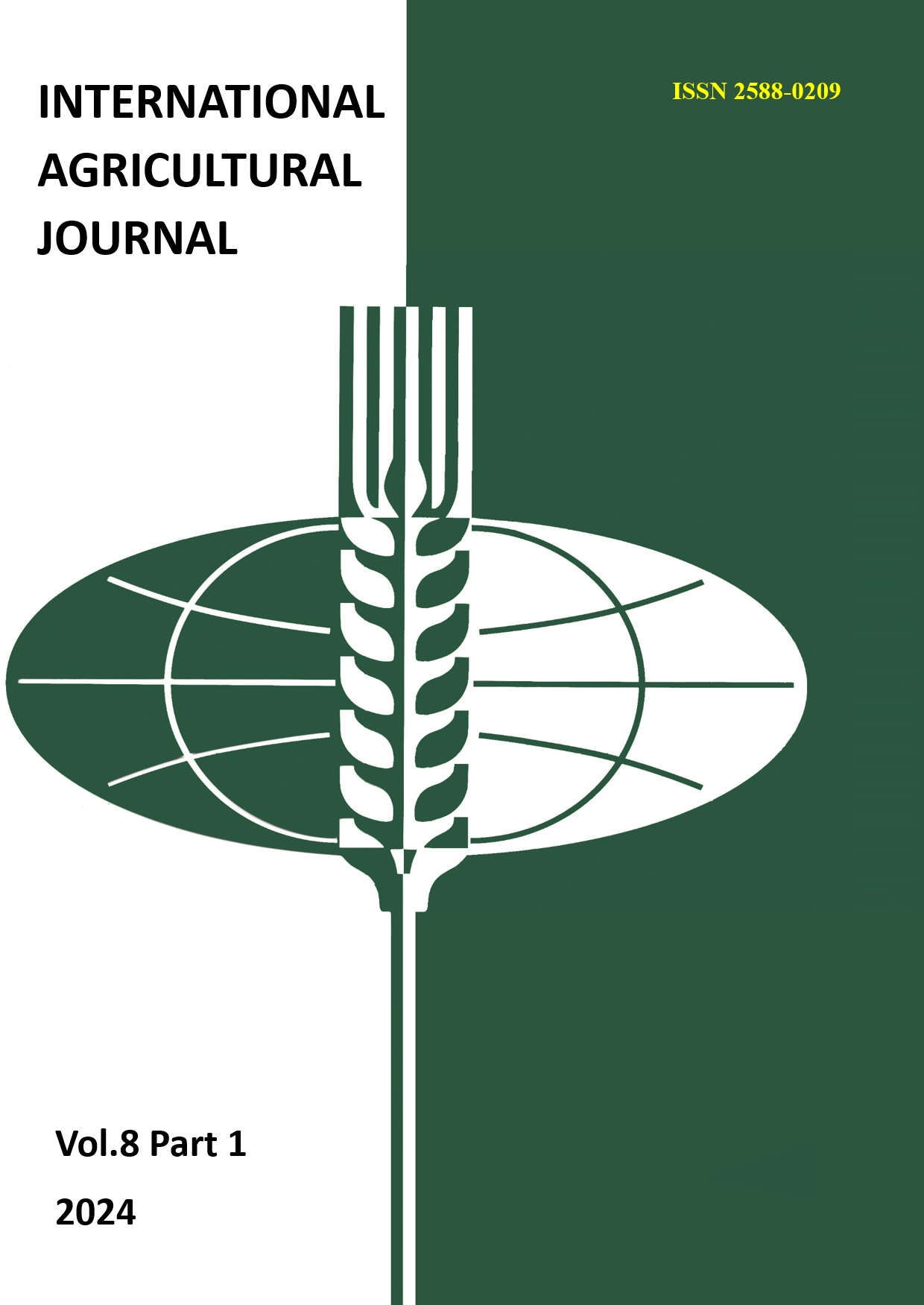HARMFULNESS OF THE WEED COMPONENT IN THE AGROCENOSIS OF MINT
Main Article Content
Abstract
The purpose of the study is to determine the harmfulness of weeds in the agrocenosis of field mint in the mountainous zone of the Chechen Republic. To achieve this goal, it was necessary to determine the effect of plant density per unit area on the yield of field mint in the mountainous zone of the Chechen Republic. The study was conducted in 2023 in the mountainous zone of the Chechen Republic. The increase in the mass of weeds is directly dependent on the increase in their number. At the same time, the weight of one specimen is reduced and amounts to 23.8% of the weight with minimal contamination. With minimal weed contamination, the mass of one weed plant specimen is quite high - 68.71 g; with an increase in the number of weed plants, the figure decreases to 14.10 g, which is 20.52%, which indicates intraspecific competition between weeds. The yield of field mint crops, honeycombs in Memory of Kirichenko, free from weeds is 3.68 t/ha. As the density of growth of the weed field component per unit area increased, yield losses amounted to 0.19-1.71 t/ha or 5.2-46.5% compared to the control. The results obtained are necessary to improve measures to combat weeds in the agrocenoe of field mint and obtain environmentally friendly medicinal raw materials in the Chechen Republic. In the agrocenosis of field mint, in the fight against weeds in the conditions of the Chechen Republic, it is necessary to fully use the biological characteristics of the crop.
Article Details
References
2. Bykova O.A. Techniques for increasing the yield of medicinal crops in the conditions of Western Ciscaucasia / O.A. Bykova, R.R. Tkhaganov, A.Yu. Anikina, N.I. Sidelnikov // Proceedings of the Kuban State Agrarian University. – 2022. – № 102. – P. 103-109.
3. Isaev V.V. Weed forecasting and mapping. / V.V. Isaev. // M.: Agropromizdat, 1990. - 192 p.
4. Zhivchikov, A. I. Features of growing peppermint in the Far East / A.I. Zhivchikov, R.I. Zhivchikova // Far Eastern Agrarian Bulletin. – 2020. – № 2(54). – P. 5-14.
5. Okazova Z.P., Agaeva F.A., Medoeva N.S. Methods of environmental research. Database registration certificate No. 2020620373 dated 28.02.2020. Application № 2020620223 dated 18.02.2020.
6. Okazova Z.P. The harmfulness of weeds in calendula officinalis crops / Z.P. Okazova, V.S. Gappoeva, Z.G. Khabaeva // International Agricultural Journal. – 2023. – № 1(391). – pp. 67-69.
7. Fadeeva, N.A. Peculiarities of cultivation of peppermint in the agroclimatic conditions of the Volga region / N.A. Fadeeva, N.A. Kirillov // Bulletin of the Chuvash State Agrarian University. – 2023. – № 1(24). – pp. 35-39.
8. Filonov, M. Mint / M. Filonov // Beekeeping. – 2019. – № 3. – P. 62-63.
9. Chulkova, V.V. Medicinal plants from the Lamiaceae Lindl. Family, cultivated in the Middle Urals / V.V. Chulkova, T.L. Chapalda, N.M. Poyarkova // Bulletin of Biotechnology. – 2020. – № 2(23). – P. 17.
10. Yakimovich, E. A. Bioecological approaches to the protection of medicinal crops from weeds / E. A. Yakimovich // Scientific and innovative potential for the development of production and processing of essential oil and medicinal plants of the Eurasian Economic Union. – Simferopol: Limited Liability Company “Publishing House Typography “Arial”, 2021. – P. 42-54
11. Benvenuti S. Weed dynamics in the Mediterranean urban ecosystem: ecology, biodiversity and management. / S. Benvenuti. // Weed Res. – 2004. - V.44. - P.341-354.
12. Kim, D.S. Modeling herbicide dose and weed density effects on crop: weed competition. / D.S. Kim. // Weed Research, 2002. V.42. P. 1-13.11. Benvenuti S. Weed dynamics in the Mediterranean urban ecosystem: ecology, biodiversity and management. Weed Res. – 2004. - V.44. - P.341-354.

